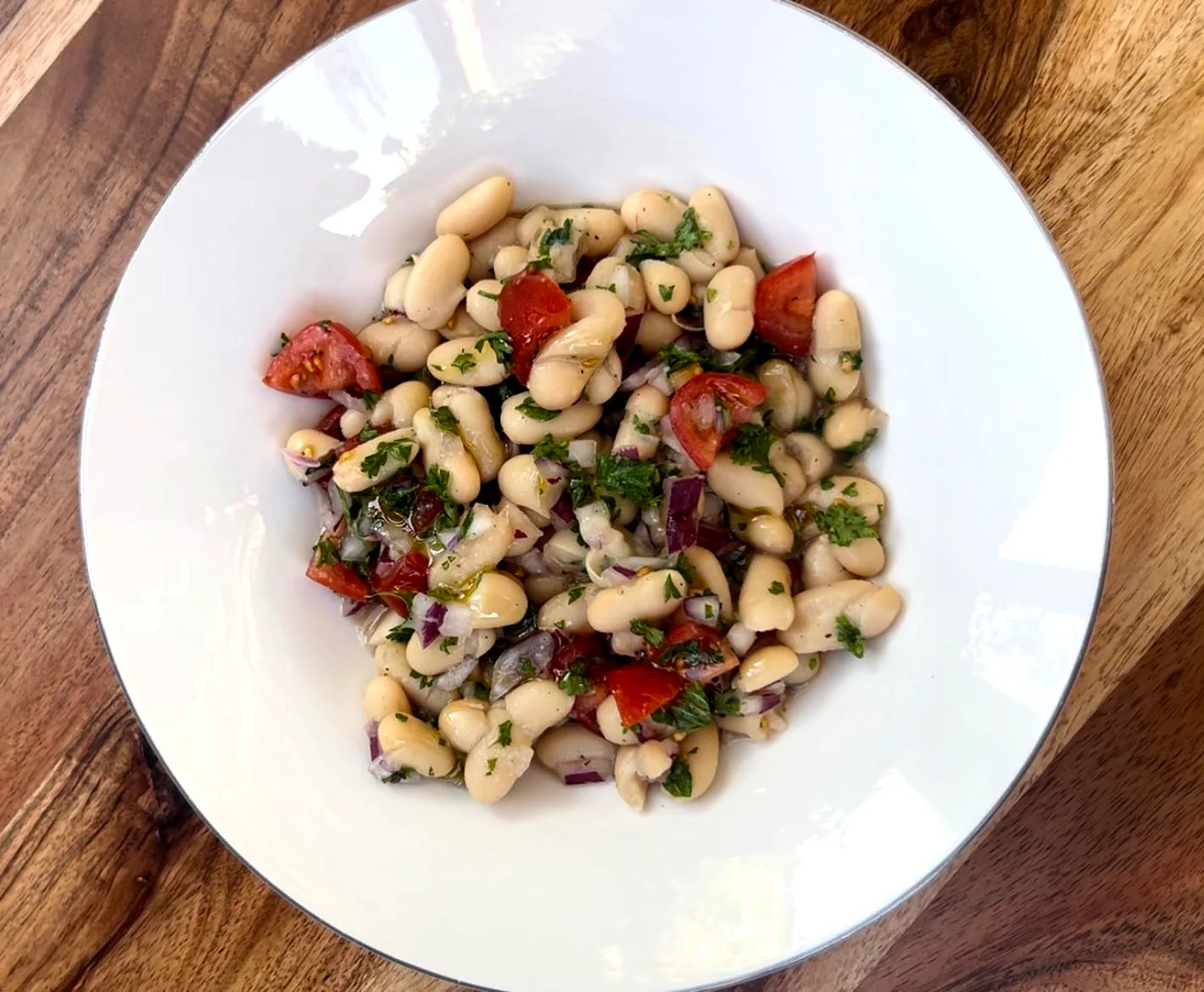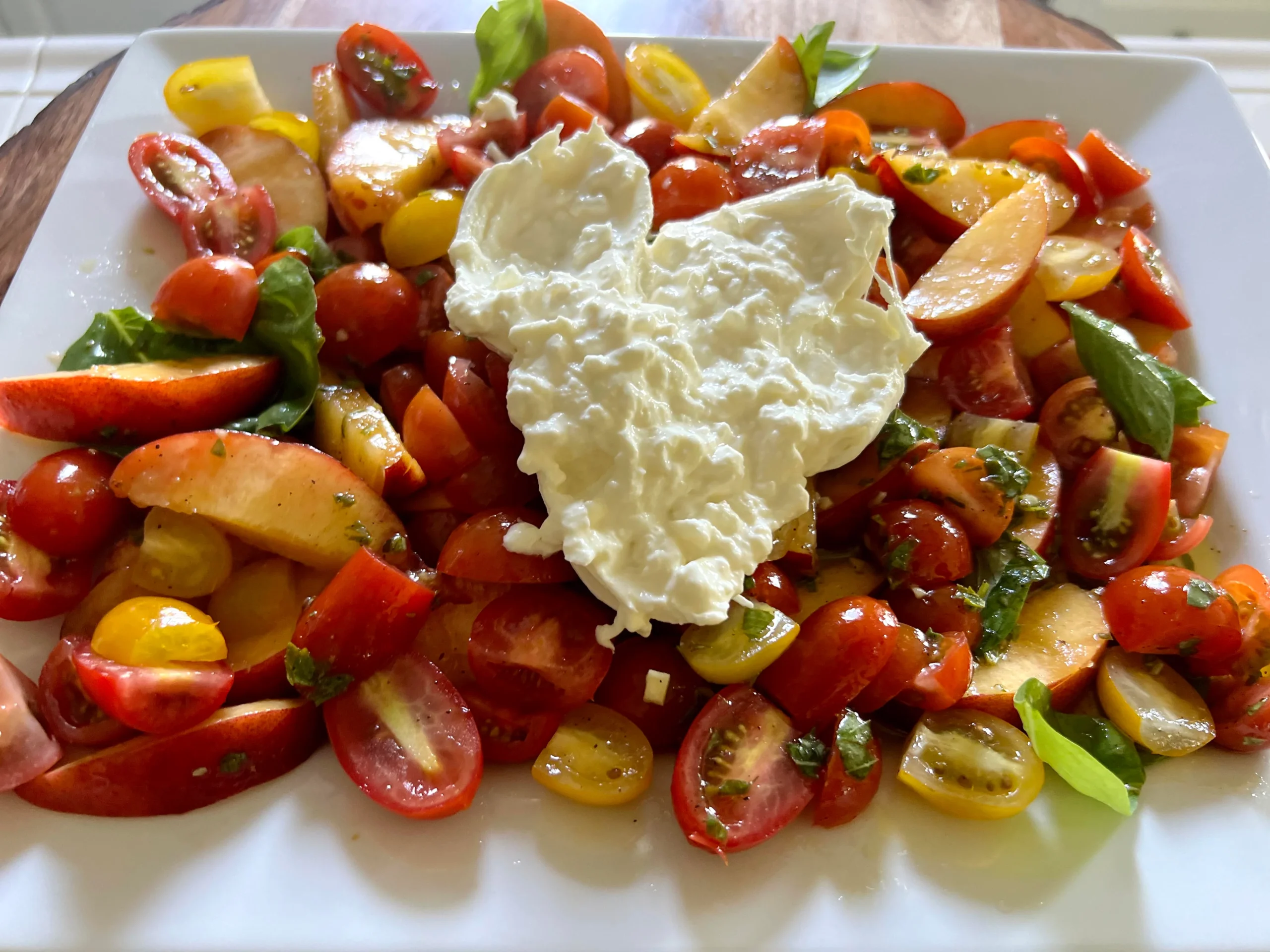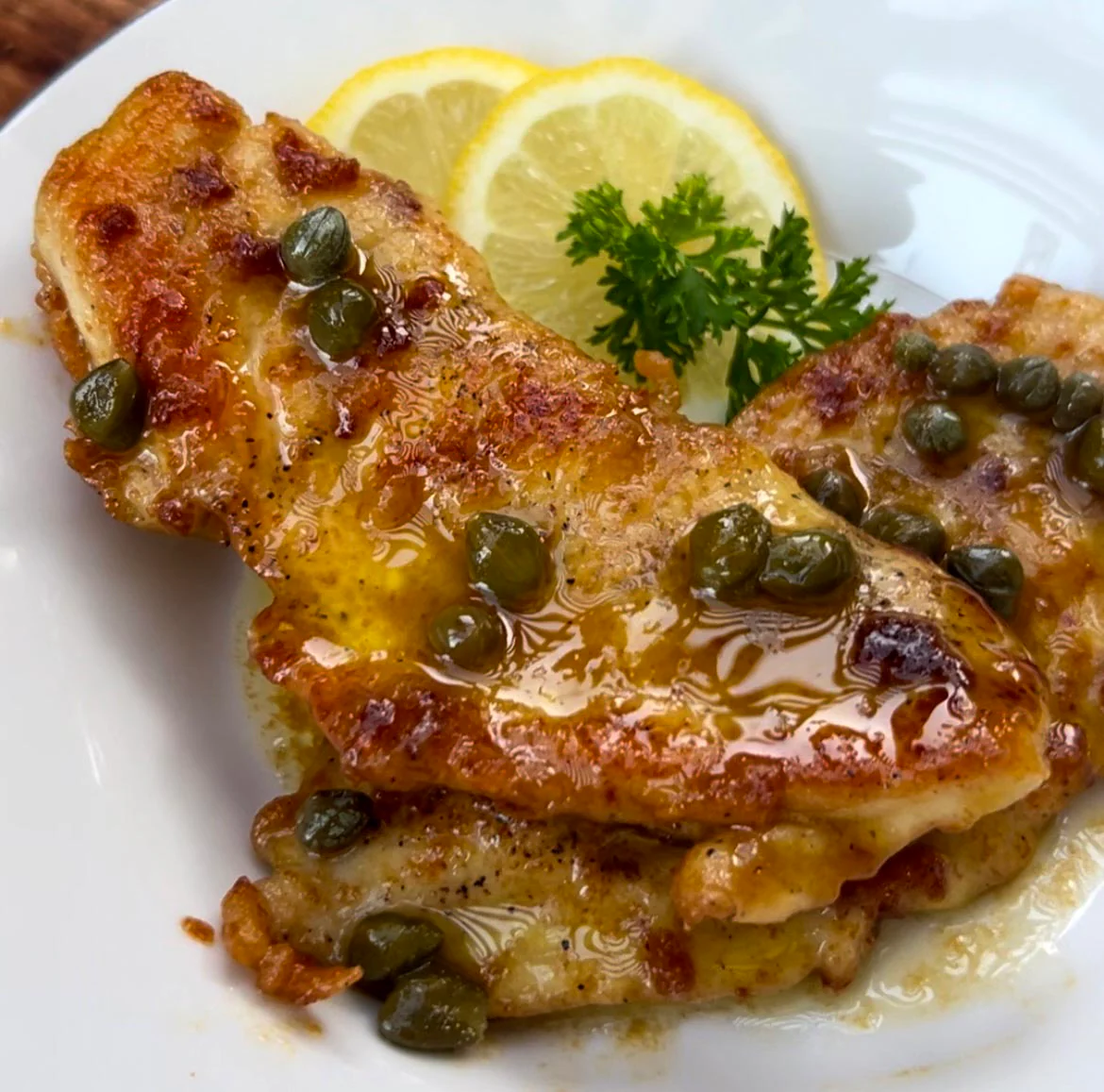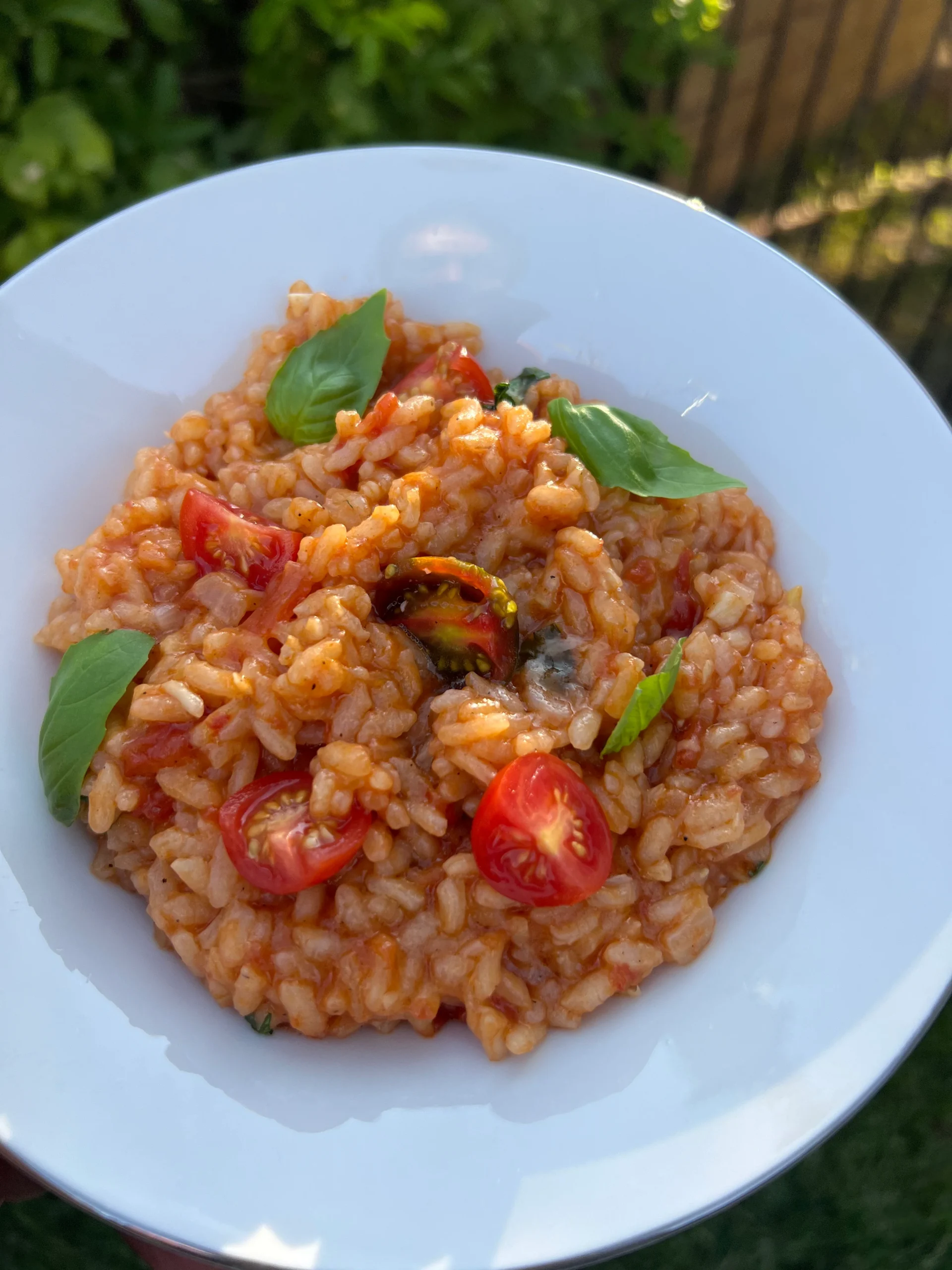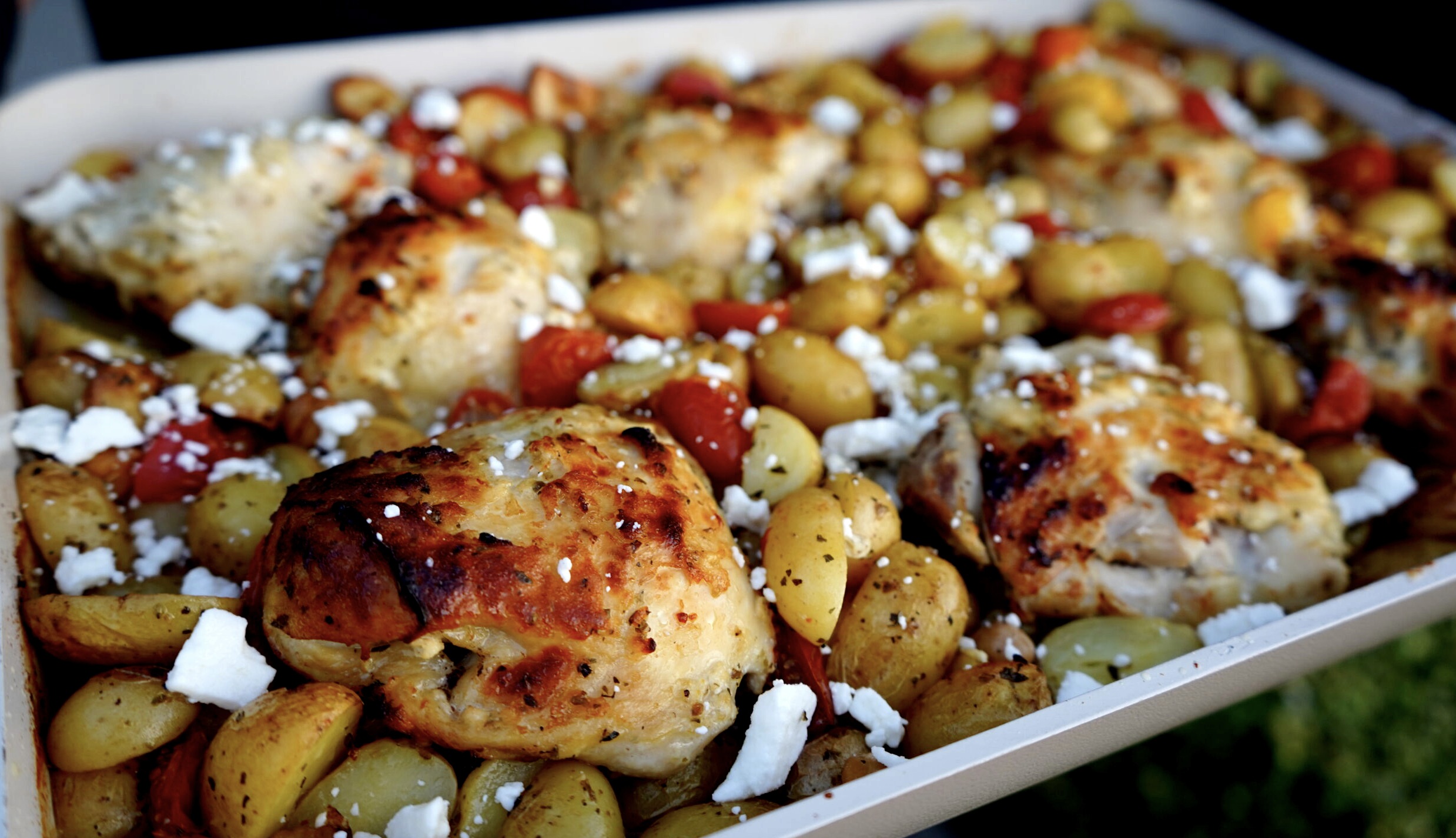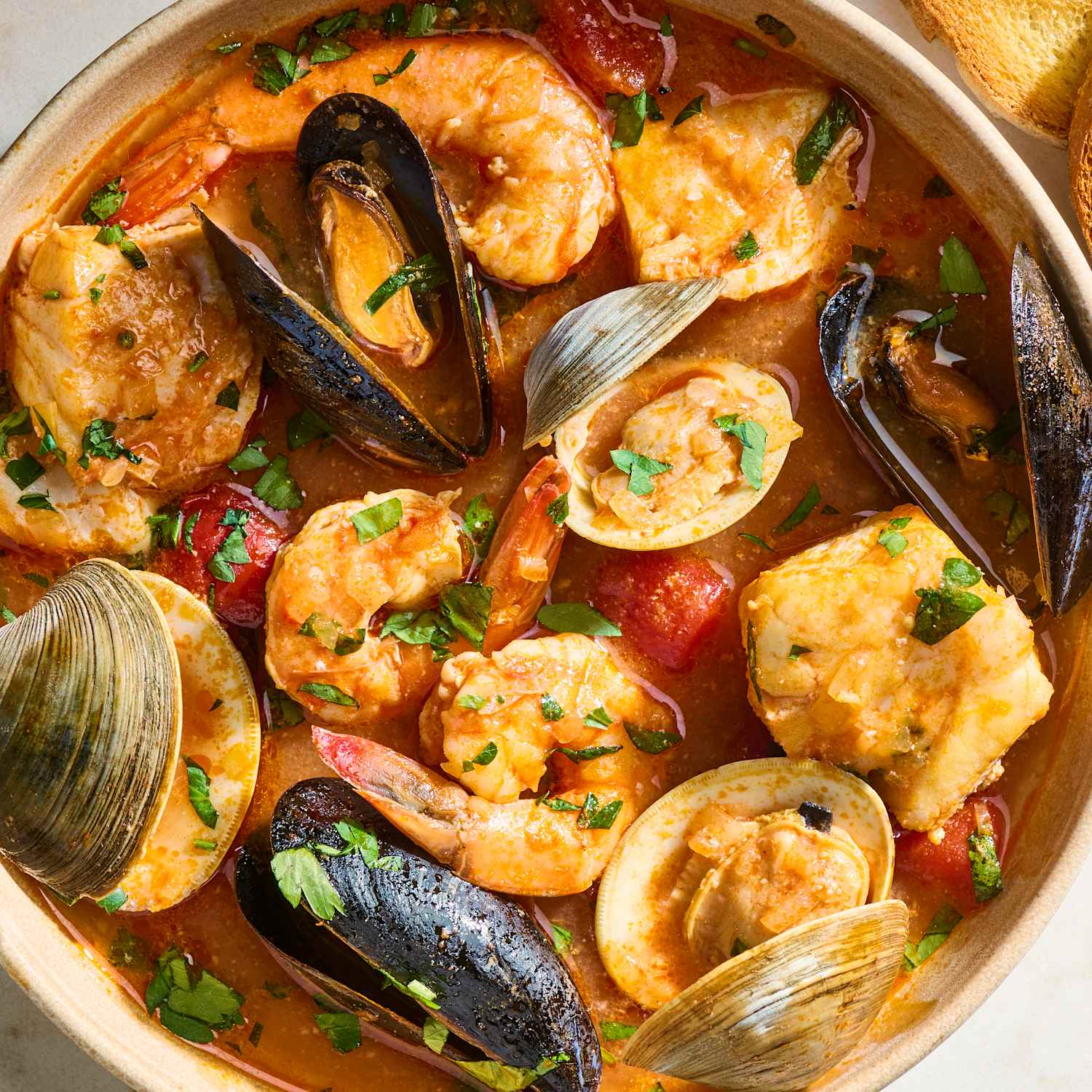Penne all’Arrabbiata Recipe – How to Make Authentic Spicy Pasta
Penne all’Arrabbiata: A Family Tradition Born in Our Kitchen
Penne all’Arrabbiata is a bold Italian classic that proves simple ingredients can deliver big flavor. Made with just pasta, garlic, tomatoes, olive oil, and plenty of chili flakes, this dish is fiery, comforting, and ready in under 30 minutes. Its name means “angry pasta” in Italian, a nod to the spicy kick that makes it unforgettable. But for me, this pasta isn’t something I inherited from generations past. It’s something I created for my children, a tradition that started in our kitchen, built from pantry staples and a desire to give them a dish that would always remind them of home.
The First Encounter with Penne all’Arrabbiata
The first time I made it, I wasn’t thinking about tradition. It was one of those nights when everything felt busy, the day had gotten away from me, and I needed something fast but satisfying. I opened the cupboard and saw pasta, canned tomatoes, garlic, and chili flakes. That was all. I threw them together, not expecting much more than a quick dinner.
But as the garlic sizzled in olive oil, as the chili flakes bloomed and filled the air with heat, as the tomatoes simmered into a glossy red sauce, something shifted. The kitchen smelled alive, sharp and fiery, the kind of smell that makes everyone wander in, asking what’s cooking.
By the time I tossed the penne in the sauce, the kids were already at the table, forks in hand. The first bite brought wide eyes, a few laughs at the heat, and then big smiles as they reached for bread to mop up the sauce. It was simple, but it was ours.
Building a Family Ritual with Penne all’Arrabbiata
From that night on, Penne all’Arrabbiata became a regular at our table. At first, the spice was a surprise to the kids, but soon they started asking for it, bragging about how much chili they could handle. It became a little family ritual, a pasta that carried energy and laughter.
Unlike the heavy dishes we saved for holidays, arrabbiata was quick, fiery, and perfect for weeknights when we needed something to gather us together. I didn’t realize it at the time, but I was building something more than dinner. I was creating a memory for them, a dish they’d always associate with home.
We started inventing rituals around it — extra Parmesan on the side for cooling the heat, tall glasses of cold water always refilled, and sometimes even a lighthearted competition: who could finish a bowl without pausing for a sip? The laughter those moments created wove itself into the memory of the meal.
Why Penne all’Arrabbiata Feels Alive
That’s the thing about arrabbiata. It looks so simple — just tomatoes, garlic, olive oil, chili, pasta. But when you taste it, you realize it has personality. It’s bold, unapologetic, alive with heat. It’s not a background dish; it demands attention.
Around our table, it demanded laughter, conversation, glasses of water or wine to cool down the burn. It was the opposite of polite food. It was food that sparked energy, food that kept us at the table a little longer, food that gave my children something they could claim as theirs.
They may not have inherited a centuries-old recipe from me, but they will inherit the memory of this pasta, the way it always showed up when we needed it, the way it turned an ordinary night into something special.
Penne all’Arrabbiata and Its Roman Roots
The dish itself comes from Rome, part of that family of minimalist pastas that Italians hold dear. Just like cacio e pepe or carbonara, arrabbiata proves that less is more. The chili brings heat, the tomatoes sweetness and acidity, the garlic a warmth that spreads through the sauce. Tossed with penne, whose ridges hold every bit of flavor, it becomes the kind of pasta you can’t stop twirling.
Even though I didn’t learn it from my family, I loved the idea of giving my kids a Roman classic to grow up with — proof that tradition doesn’t always have to be inherited. Sometimes it’s created. Sometimes it starts with a pot of boiling pasta and a handful of chili flakes.
The Everyday Magic of Cooking Arrabbiata
Over time, it became more than just a quick dinner. It became a way of marking time. The kids started recognizing the smell of garlic and chili from the other room and running in to set the table. Bread became a non-negotiable side because no one wanted to miss a drop of sauce.
The “heat contest” became a family joke — who could handle the spiciest plate, who needed extra cheese to cool it down, who gulped the most water between bites. Those little rituals, as silly as they sound, are the moments that stick. And when I look back, I realize that’s exactly what I wanted: a dish that would give my children a memory, a tradition they could carry with them, something to make our table feel uniquely ours.
The Spirit of Rebellion in Penne all’Arrabbiata
Arrabbiata has a history of being rebellious, and maybe that’s what I love most about it. It doesn’t blend quietly into the background; it’s fiery, it’s loud, it makes itself known. In some ways, it reflects the chaos of family life — the noise, the laughter, the energy that never quite sits still.
And yet it’s also grounding, because no matter how busy the day, you can bring it together in under half an hour. By the time the sauce is simmering, the house smells like comfort, like heat and home and something worth gathering around.
Tradition Made in the Moment
I’ve thought a lot about how traditions start. Some are inherited, passed down carefully like treasures. Others are built in the moment, without planning, just because something works and you decide to do it again.
That’s what Penne all’Arrabbiata is for us. It’s not something I grew up with, but it’s something my children will. And to me, that’s just as meaningful. Because tradition isn’t about what’s written down; it’s about what we choose to repeat, what we choose to give meaning.
A Scene That Repeats
Now, every time I make arrabbiata, I see the same scene unfold. The kids drifting into the kitchen as the garlic hits the oil, the chili flakes popping just enough to make the air tingle, the sauce bubbling into a red that seems almost festive.
I see the bowls hitting the table, the bread basket following, the laughter starting before anyone even takes a bite. And I know that one day, when they make this pasta in their own homes, they’ll remember. They’ll remember the spice, the laughter, the way the table felt full, the way home tasted.
So no, I didn’t inherit this dish. I created it for my children. And that, I think, is the heart of Penne all’Arrabbiata — not just the heat of the chili or the sweetness of the tomatoes, but the way it turns into something larger than the recipe. A bowl of pasta that becomes tradition, memory, connection. Angry in name, joyful in reality. The pasta my kids will always think of as ours.
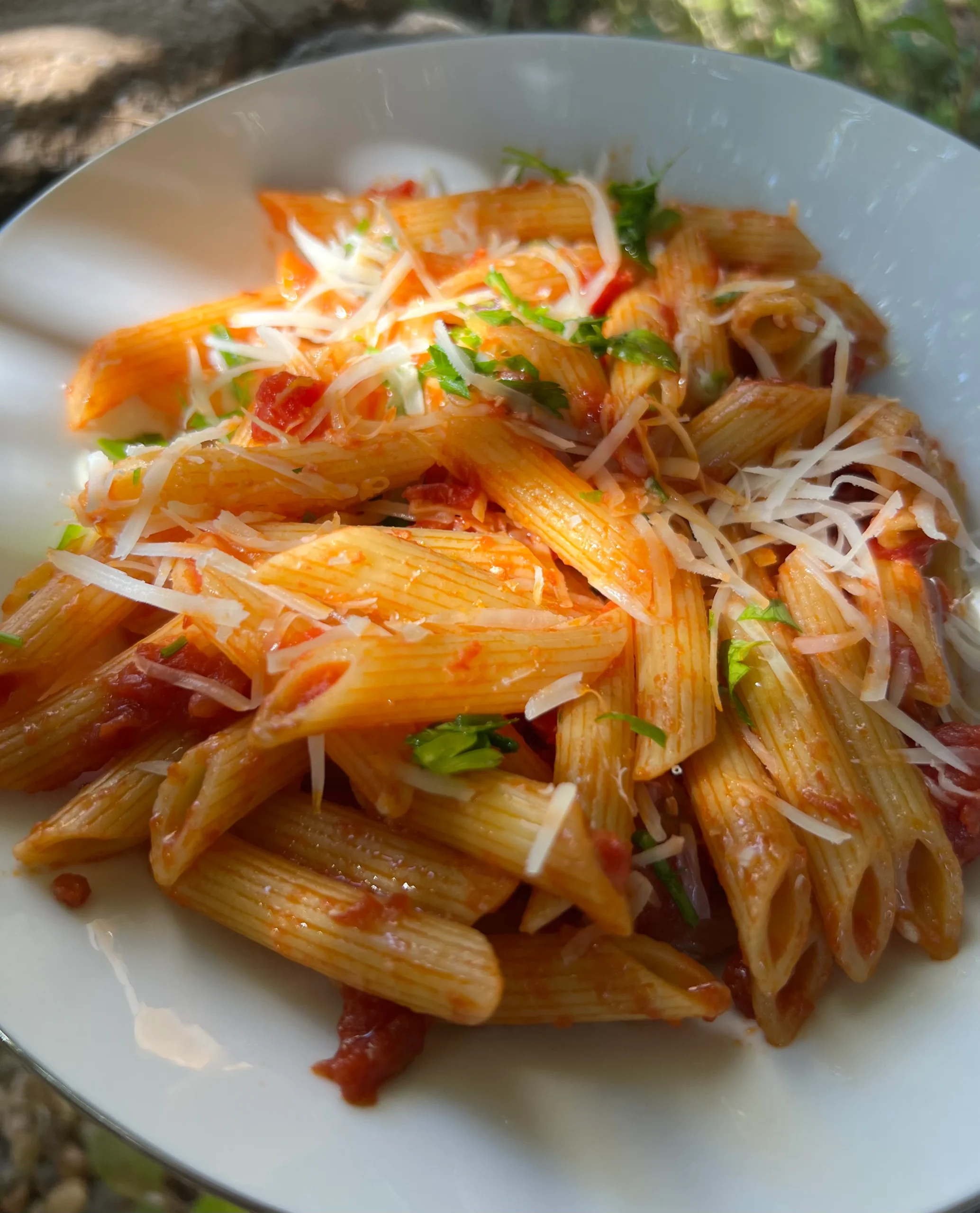
Penne all’Arrabbiata
Ingredients
Method
- Boil the penne in salted water until al dente. Reserve about 1/2 cup of pasta water before draining.
- In a large pan, heat the olive oil over medium heat. Add the minced garlic and red chili flakes, sautéing for about 1 minute until the garlic is fragrant but not browned.
- Pour in the crushed tomatoes and season with salt. Let the sauce simmer for about 10 minutes, allowing it to thicken and the flavors to meld.
- Add the drained penne to the sauce, tossing to combine. If the sauce is too thick, add a little reserved pasta water to achieve your desired consistency.
- Plate the pasta, top with chopped parsley, and add Parmesan cheese if desired.
Shopping for Penne all’Arrabbiata in California
Cooking Mediterranean food in California feels almost natural — the sunshine, the rhythm of the seasons, the way farmers markets spill over with color every weekend. But when I started making Penne all’Arrabbiata for my kids, I realized that half the joy was in the ingredients themselves. Some I had to bring directly from Italy, others I learned to grow or gather here at home.
Whenever possible, I import what I can — jars of true San Marzano tomatoes, the kind with that unmistakable balance of sweetness and acidity; olive oils pressed by small producers who bottle liquid gold with the same care their families have for generations; dried chili peppers that carry an earthy heat no supermarket aisle can replicate. These items feel like anchors to tradition, the pieces that tie the dish back to its Roman roots.
Everything else, I find or nurture in California. Garlic from the farmers market, firm and fragrant. Basil still warm from the sun, clipped from a pot just outside the kitchen door. Lemons from backyard trees, their zest brightening both sauce and salad. Even the bread — a rustic loaf chosen from a vendor who knows me by name, whose flour still tastes of the fields.
The kids love these trips as much as I do. They trail beside me at the market, fingers grazing baskets of peppers, eyes lighting up when they spot figs or cherries, sometimes begging for samples before we’ve even finished shopping. What they don’t always realize is that these rituals — choosing, tasting, carrying food home in paper bags — are as much a part of the recipe as the pasta itself.
California makes Mediterranean cooking feel like it belongs here. The climate mirrors Italy’s in so many ways: olive trees thrive in the hills, grapevines stretch across valleys, and chili peppers grow bold under the same kind of sun that beats down on Roman markets. By blending what I import with what I grow or gather locally, every dish becomes a bridge — half Italy, half California, fully ours. And every time Penne all’Arrabbiata comes to the table, it feels like proof that tradition doesn’t always have to stay in one place. Sometimes, it travels, adapts, and finds new roots.
Cooking Penne all’Arrabbiata: California Sunshine Meets Italian Heat
The cooking itself never changes much — garlic sizzling low and steady in golden olive oil, chili flakes blooming just long enough to release their fiery perfume, tomatoes simmering into a sauce that coats every ridge of the penne. But California adds its own little touches. Sometimes I’ll toss in fresh basil from a backyard pot, the leaves still warm from the sun. Other times, I’ll use a splash of California wine in the sauce — a Zinfandel that deepens the tomatoes’ sweetness or a bright Sauvignon Blanc that sharpens the edges.
The ingredients here are alive in the same way the dish is. Olive oil from a small producer in Napa has a peppery bite that rivals Tuscan oils. Local heirloom tomatoes in summer are so sweet and juicy they can almost replace the canned imports. Even the bread, pulled from a stall at the farmers market, feels like it was meant to be torn by hand, dipped into the glossy sauce, and passed around the table.
When I cook, the kids still hover. Sometimes they’re grating Parmesan, sometimes they’re sneaking slices of bread before dinner. The kitchen smells like garlic and chili, but it also smells like home — California sun streaming through the windows, the sound of neighbors outside, life happening all around us while we gather around one pan of pasta.
Pairing Penne all’Arrabbiata in California Style
Even though Penne all’Arrabbiata was born in Rome, pairing it in California has become part of the ritual.
Bread
These days, I almost always bake my own crusty sourdough. The tangy depth that comes from tending the starter, the chewy crumb, the crackle of the crust as it cools — it all feels more personal, more connected. There’s something deeply satisfying about tearing into a loaf you shaped with your own hands, especially when it’s used to catch every drop of spicy tomato sauce from the Penne all’Arrabbiata. On days when I want something lighter, I’ll shape ciabatta instead — its airy interior soaking up the sauce in a way that feels effortless, almost playful, like the bread was made for exactly this dish.
Wine
When it comes to wine, I’ve started importing bottles from Italy to keep the spirit of the dish authentic. A deep Montepulciano d’Abruzzo pairs beautifully with the heat of the chili, its dark fruit and rustic edge standing up to every fiery bite of Penne all’Arrabbiata. On warmer nights, I reach for a chilled rosé from Puglia or Abruzzo, light and refreshing, softening the spice without losing the vibrancy of the meal. And when I want something with a sharper punch, a bottle of Chianti from Tuscany always feels right — its bright acidity echoing the tomatoes and balancing the sauce in a way that only Italian wine can.
Salads and Sides
Our California farmers markets practically beg for salads — the kind that don’t need recipes, just baskets of fresh produce and a drizzle of good olive oil. A handful of arugula tossed with lemon juice and olive oil brings peppery freshness, its bite waking up the palate between forkfuls of spicy Penne all’Arrabbiata. In the summer, I can’t resist adding sliced cucumbers or grilled zucchini from the stands nearby, their cool crunch or smoky sweetness balancing the fiery sauce.
Sometimes I’ll pile tomatoes still warm from the sun onto a plate with basil leaves and fresh mozzarella, making a quick Caprese that feels like a love letter to both California and Italy. Other days it’s shaved fennel with oranges, a salad I first tried on the Amalfi Coast but now recreate whenever the market stalls overflow with citrus. Even a simple bowl of olives from a local vendor finds its place at the table, offering salt and richness alongside the pasta.
The meal becomes more than just pasta; it turns into a spread that celebrates what’s fresh, what’s seasonal, what feels alive. That’s the beauty of California paired with Mediterranean simplicity: you don’t need much to make the table feel abundant. A few vegetables, a squeeze of lemon, a drizzle of olive oil — suddenly dinner feels like a feast, one that stretches the meal a little longer, keeps everyone talking, dipping bread, and reaching for seconds.
Cheese
Though traditionalists might argue that arrabbiata doesn’t need cheese, our table always has a bowl of freshly grated Parmesan or pecorino sitting right in the middle, like a quiet invitation. The kids are the first to reach for it, piling it high on their bowls, watching the curls of cheese melt into the glossy red sauce. They’ve turned it into a ritual — one measures by the handful, another by how long the grater shavings snow down into the pasta.
The cheese softens the edges of the heat for them, but for me, it’s about the way the sharpness cuts through the sauce, adding another layer of depth. Pecorino, with its salty bite, feels bold and rustic, while Parmesan lends a nutty warmth that clings to the ridges of the penne. Some nights we put out both, letting everyone decide which path they prefer. I always sneak a taste of each, because the pairing feels different every time.
It’s become part of the performance of dinner — the laughter as someone shakes on too much, the teasing when another pretends to go without but sneaks a spoonful anyway. The cheese may not be required for Penne all’Arrabbiata, but in our home it’s as much a part of the meal as the bread or the wine. It doesn’t take away from the fiery spirit of the pasta; it simply makes it ours.
California Living, Mediterranean Spirit
What I’ve learned is that cooking Mediterranean food in California isn’t about recreating every detail exactly. It’s about blending worlds. I may not be walking the streets of Rome, but I’m walking aisles at Sprouts, weaving through rows of heirloom tomatoes at the farmers market, and letting California’s abundance shape the way I cook.
It’s the same spirit — fresh, seasonal, simple — just translated into my daily life here. And when the pasta hits the table, fiery and alive, the kids laughing over who can handle the most heat, it doesn’t matter that we’re thousands of miles from Italy. What matters is that we’ve created a tradition, one bowl of Penne all’Arrabbiata at a time, rooted in California sunshine and Mediterranean soul.

